
When visiting Taiwan, has a Taiwanese friend ever treated you to a cup of cool, refreshing herbal tea on a hot summer’s day? Go to Herb Lane in Taipei’s Wanhua District and you will find that the street of small shops offering hundreds of types of herbs very much resembles Diagon Alley from the Harry Potter books. If you get a headache from the summer heat, someone might recommend that you take a bath with Japanese mugwort (Artemisia princeps), or if you have tension in your neck and shoulders, that you should relieve it with a quarter hour of moxibustion using Japanese mugwort to promote blood circulation. And did you know that the main ingredient for making the herbal remedy NRICM101, for treating Covid-19, is actually fishwort (Houttuynia cordata), the “king of herbs”?

Virtually every plant has some beneficial effect. The main difference between the Taiwanese herbs sold in herb shops and the plants used in Traditional Chinese Medicine (TCM) is that the latter often require complex preparation and are mostly imported. The herbs you find in Taiwanese herb shops, on the other hand, are mostly fresh, because over 90% of them grow wild in Taiwan or are cultivated in medicinal herb gardens.
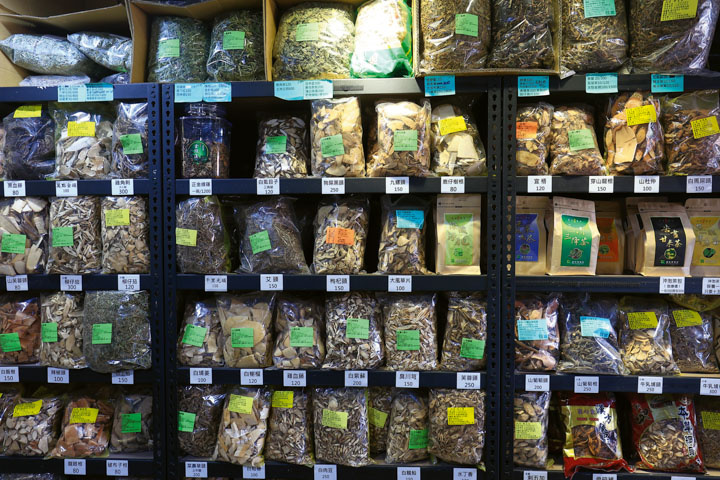
Are you ready to jump down a herbal rabbit hole with us? Welcome to the world of Taiwanese herbs!
A hidden world
If you want to get to know Taiwanese herbs, there’s no need to go to remote mountains: You can see them in abundance right in Taipei’s Xiangshan Park, near the Xiangshan Metro station. Dasha Lee, a well-known expert in herbs who teaches at Xinyi Community College, leads us on a one-hour stroll through the park, where we record the names of nearly 100 plants.

“In the world of herbs we need to humbly crouch down and carefully observe, for if we stand tall, everything looks the same.” So we hunker down near the ground. At first all we see is a stretch of green, but as we follow Lee through the park she points out and names various herbs: Oriental false hawksbeard (Youngia japonica), rabbit milkweed (Ixeris chinensis), Korean mock strawberry (Duchesnea chrysantha), Japanese mahonia (Gonostegia hirta), open-leaved marsh pennywort (Hydrocotyle batrachium), dwarf jo-jo (Soliva anthemifolia), broadleaf plantain (Plantago major), running mountaingrass (Oplismenus compositus), Asiatic pennywort (Centella asiatica), creeping woodsorrel (Oxalis corniculata), redflower ragleaf (Crassocephalum crepidioides), wood bittercress (Cardamine flexuosa), and on and on. As she proceeds we discover a variety of different shapes within this stretch of green, and like an image with increasing depth of field, they stand out from the greenery one after the other.
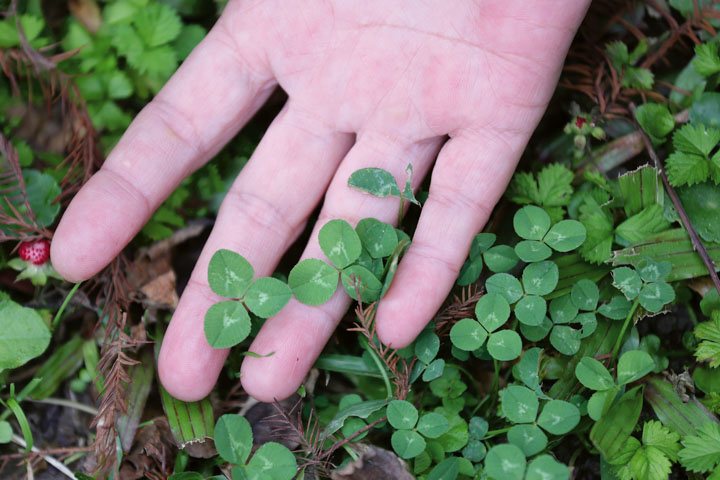
Lee explains them one by one: Open-leaved marsh pennywort used to be very important in treating neonatal jaundice, and is also a diuretic. Dwarf jo-jo looks like carrot leaves and can be mixed into salad like parsley or celery. Little ironweed (Vernonia cinerea), a plant with purple flowers, is used as a remedy for colds and flu. Asiatic pennywort is known in Chinese as “thunder root” because when there are thunderstorms extra roots grow out of its stem nodes. Wood bittercress has very long bean-pods and makes a delicious wild vegetable.
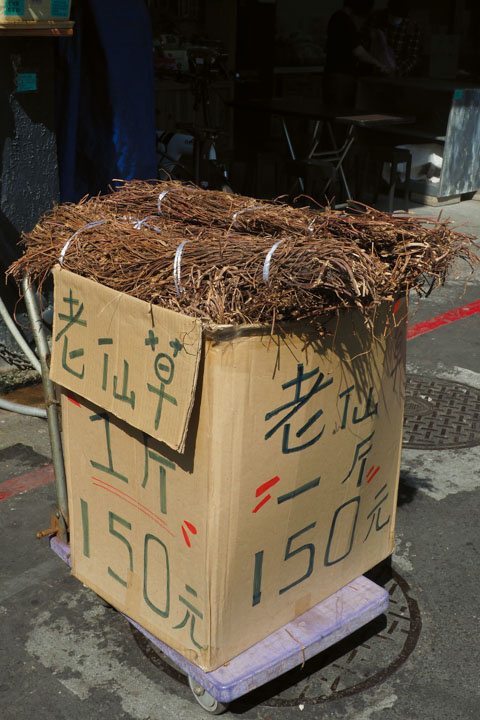
Oriental false hawksbeard is at its most tender in early February, and Lee says that it makes instant noodles taste great. Rabbit milkweed and Oriental false hawksbeard both have yellow flowers, both are members of the daisy family (Asteraceae), and they are similar in shape. But if we observe closely, we see that the stems and leaves of Oriental false hawksbeard all grow out of the root, while the leaves of rabbit milkweed emerge from the stem.
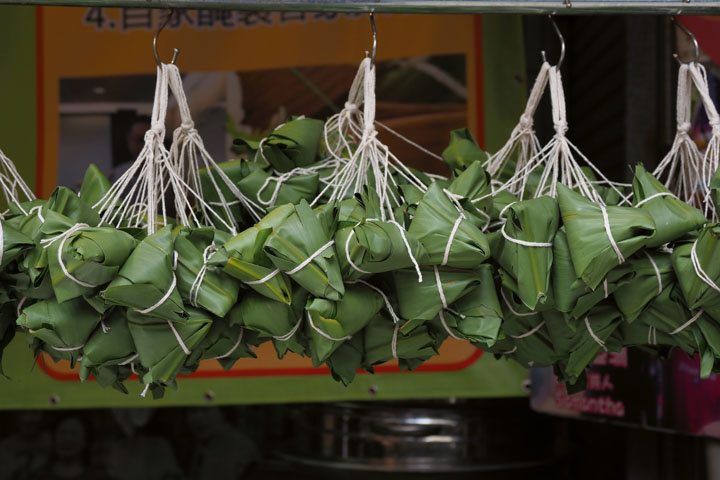
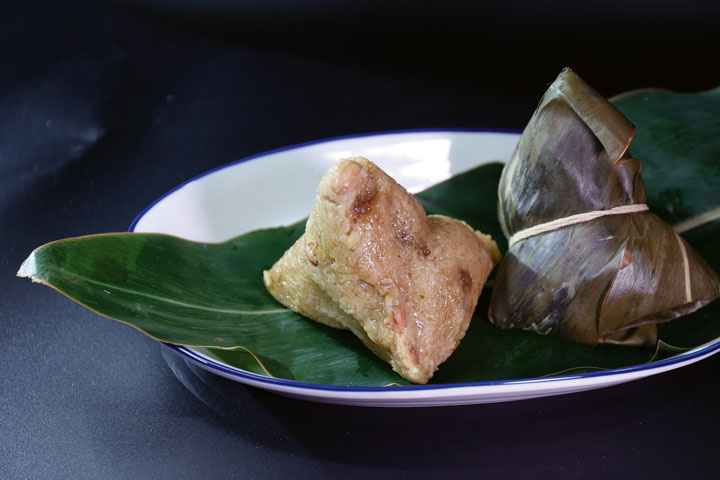
Lee tells us to pay attention to not just the ground, for Taiwanese herbs also grow as trees and shrubs. She asks us to look up at a subcostate crape myrtle (Lagerstroemia subcostata), whose trunk is so smooth that it is also called the “monkeys don’t climb” tree, from which our ancestors made a decoction to fortify their bones and tendons. There are also tall longan trees (Dimocarpus longan), of which “the roots are very tonic when stewed, and everyone knows longan is used in TCM to ‘tonify the blood.’”
You can identify herbs by sight, and touch the stems and leaves to get a sense of how smooth or hairy their surface texture is, or you can pick a leaf and tear or rub it to smell its aroma. Lee says: “When you are familiar with them, you will see them.”
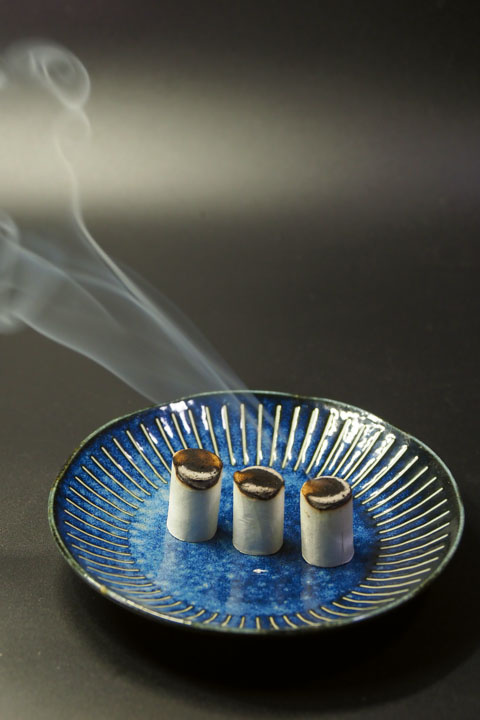
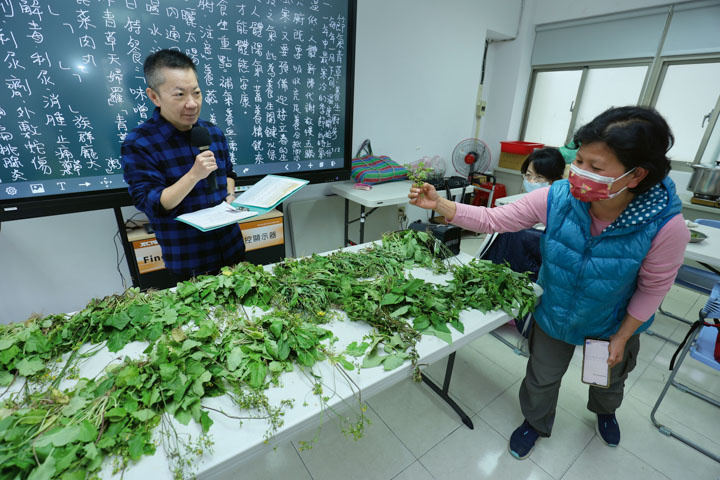
Ancestral wisdom
While introducing the various herbs, Dasha Lee mentions many that are used in TCM to promote urination and “eliminate dampness.” They can remove excess moisture from the body, the buildup of which is closely connected to Taiwan’s humid island climate. “When the weather is excessively damp people feel unwell. Our ancestors discovered that after consuming certain herbs they felt that their blood and qi could circulate more freely and their bodies were more vigorous, and they recorded this knowledge.”
The systematic recording and collection of herbal knowledge in Taiwan, says Lee, began in the era of Japanese colonial rule. In 1924 the Japanese botanist Syuniti Sasaki completed his book Outline of Folk Medicinal Plants of Taiwan, which includes 579 plant species. This launched the systematic study of medicinal plants in Taiwan.

In 1945, the Taiwan Plant Lovers’ Association compiled Illustrations of Wild Edible Plants in Taiwan, which features 100 edible wild plants and describes how to consume them. Lee also cites similar works: The World of Herbs, published by Zhong Dingquan in 1977; Common Medicinal Herbs, compiled by Zheng Linzhi in 1996; the 2010 book How to Use Native Taiwanese Herbs, by Weng Yicheng; and Lee’s own book Taiwan Herbs, published in 2021. She hopes to keep accumulating and passing along the knowledge of the land learned by our forebears.
Herbs in daily life
Although people today live in crowded cities, still there are herbs all around us. As we walk in Xiangshan Park, we meet a person who tells us about the Indian borage (Coleus amboinicus) that his family cultivates in front of their home, saying that if he senses inflammation or excess “fire” in his body (in terms of TCM), he simply washes some of the herb in salt water and eats it, and he miraculously feels better. Along the route we also encounter a plant with a peculiar odor, and Lee says: “Smell this epazote [Dysphania ambrosioides]—it’s a kind of shecao [“snake herb”], and in the past people planted it around their homes to keep snakes away. It can also be used for bathing, and it’s a very effective remedy for atopic dermatitis.”
Another common herb is shell-flower (Alpinia spp.), in the ginger family (Zingiberaceae). The leaves are often used to wrap zongzi rice dumplings, but Lee explains that the plants are also effective at “promoting sweating” and “eliminating heat.” Fresh or sun-dried shell-flower leaves also can be used to fill herbal pillows to aid sleep, or in herbal bath packets.
Aloe (Aloe vera var. chinensis) plays an important role in Taiwan’s hand-shaken drinks culture and is a major ingredient in beauty products. It can be used to treat sunburned skin and also promotes hair growth.
There are even more diverse uses for Japanese mugwort in daily life. Its effect in dietary therapy goes without saying, and in folk culture it is used to “dispel miasma and ward off evil.” It is also used for moxibustion treatment and can keep away flies and mosquitoes. Meanwhile, Indian catmint (Anisomeles indica), which is popular in Hakka communities, was traditionally used to wash newborn babies. It can also be used to wipe the face or body of an infant who is prone to night crying or has a weak constitution, and expresses a prayer for their healthy development. This plant has long been part of daily life among the Hakka.
Stories hidden in names
As well as their scientific names, herbs also have common names that often derive from stories in folk culture. For example, Dasha Lee asks if we know how Chinese mesona (Mesona chinensis), the plant used to make grass jelly tea, got its Chinese name of xiancao—“celestial being herb.” In former times there was a tradition in Taiwan of kindhearted people putting out kettles of herbal teas, such as grass jelly tea, beside roads and mountain trails, for travelers to partake of. The drink helped wayfarers suffering from exhaustion in the summer heat to regain their strength, and country folk said that this herb with its remarkable powers was a gift from celestial beings.
These stories of the names of herbs remind me of the song “Bird Berries” on Water Snowflake Goes to Market, the latest album by the Hakka music group Sheng Xiang and Band. The song’s Chinese title is a Hakka word for black nightshade (Solanum nigrum), and the song also includes the herb’s names in Taiwanese Hokkien, Amis, Japanese, Cantonese, and Paiwan. In fact, black nightshade is used in a wide variety of cultures, which is why Chung Yung Feng’s lyrics in the song include the line: “Depending upon what you call me, I know what place you are from.”
Transcending international borders
Taiwan’s indigenous peoples, who remain close to nature, are highly adept at using herbs.
For example, Taiwan euphorbia (Euphorbia formosana) is a common indigenous treatment for snake bite. The whole plant is mashed and then is either decocted and taken internally, or directly applied to cover the wound; either way, it is remarkably effective. Ailanthus prickly ash (Zanthoxylum ailanthoides) has thorns all along its branches and trunk, so its common names in Chinese include cicong (“prickly scallion”) and the humorous niao bu ta (“birds don’t land”). The leaves are an indispensable wild vegetable and seasoning in indigenous cuisine and are delicious in salads, scrambled eggs, and soups.
Besides herbs native to Taiwan, plants have also been introduced into Taiwan through the migration of people. Thus many foreign herbs have become “naturalized citizens” of the island.
The sensitive plant (Mimosa pudica) came to Taiwan from the American tropics in the 17th century. Our ancestors used the root of the plant, and Lee says: “This plant has a huge range of medicinal uses, such as calming the mind and assisting sleep, reducing ‘liver fire,’ lowering blood sugar, and reducing uric acid.” Black-jack (Bidens pilosa var. radiata) came from Okinawa, and today is a basic ingredient in Taiwanese herbal teas that are cooling and reduce “fire.”
Pandan (Pandanus amaryllifolius) was brought to Taiwan by immigrants from Southeast Asia; it has the effect of lowering blood sugar. Bitter vine (Mikania micrantha) is another introduced species. It is a very hardy plant, and in Eastern Taiwan some people have used it to develop an insect repellent to combat Forcipomyia taiwana, a small black biting midge.
An herb feast
In her class on using seasonal herbs in the kitchen, Dasha Lee teaches people how to use herbs for healthful cuisine. On the day of our visit, the class makes a number of herb dishes.
There is a whole table of herbal foods, including herbs with miso and sesame as well as deep-fried “herb tempura” made using Oriental false hawksbeard as the main ingredient. Lee explains that it is not easy to grow this vegetable oneself, and only the wild plant comes with the full flavor bestowed by the earth. Meanwhile, the main ingredient in her healthy herbal congee is black nightshade, and in terms of TCM the congee made with its leaves can “clear heat,” “reduce inflammation,” “remove toxins,” and “protect the liver.” In addition, her specially made herbal tea to welcome the Lunar New Year and protect against Covid-19 is made with fishwort and mulberry leaves (Morus spp.). The former can serve as a detoxicant and diuretic and can “clear lung heat,” “moisten the lungs,” and reduce blood pressure, while the latter can relieve cough, clear phlegm, reduce blood sugar, and “cleanse the blood.”
There are so many herbs around us in our daily lives, each with its own properties and uses. This knowledge is a treasure accumulated through the wisdom and experience of our ancestors and handed down to us. Do you want to know more about herbs? Perhaps you can take a trip to Taipei’s Herb Alley—or just start off with a cup of herbal tea!










